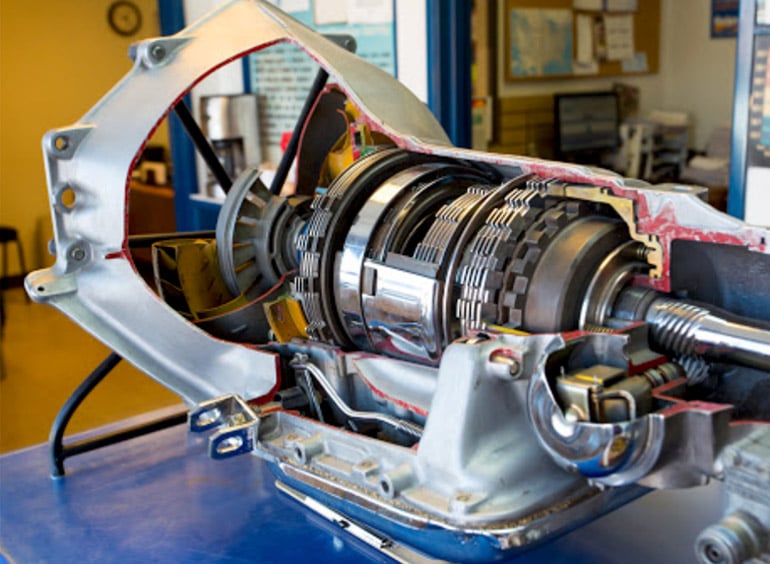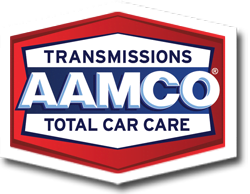If you’ve gone car shopping the last few years, you probably noticed there are more transmission options on the market than there used to be. While this means there’s a transmission type for all needs and preferences, it also means there’s more to understand about how each works. Depending on what you’re looking for, you may look into manual, automatic, dual-clutch, or continuously variable transmissions – all of which can be found in new cars on the market.
Manual Transmissions
Also known as standard transmissions or simply stick shifts, manual transmissions operate mechanically rather than relying on electronic components to function. Though modern manual transmissions may use some electrical components to improve function, it’s primarily up to the driver to determine when gear shifts happen, making them mechanically simpler than other types of transmissions.
With Manual Transmissions, The Driver Controls All Gear Shifts
When driving a manual transmission, the driver uses a shifter together with a clutch pedal to control the transmission and clutch. The shifter facilitates gear selection and the clutch pedal engages or disengages the clutch, allowing for gear shifts to happen. This means it’s up to the driver to decide when to shift gears based on the car’s RPM, speed, and the desired amount of power.
Greater Driver Control & Durability Can Make Up for a Larger Learning Curve
The top selling points of manual transmission vehicles include increased driver control and better durability. Drivers who want control over gear shifts to optimize power and speed will prefer a manual transmission vehicle. Overall, because of how manual transmissions are built, they tend to last longer and need fewer repairs than other types of transmissions. However, there’s also a learning curve for new manual transmission drivers getting a feel for using the clutch pedal.

Automatic Transmissions
Where manual transmissions are mechanically simple but more difficult to drive, automatic transmissions are more mechanically complex but simple to drive. Over the years, as automatic transmissions have improved, they have also become more popular. Gear shifts are not determined by the driver, which means more parts are necessary to help automatic transmissions operate properly.
Each Gear Shift is Determined by Sensors & Control Modules
If you’ve noticed the gradual increase in engine noise followed by a brief hesitation, that’s your automatic transmission shifting gears. It does this thanks to speed sensors and the transmission control module working together to decipher and communicate when a gear shift is necessary to maintain proper power or speed.
A Simple Driving Experience Balances with Less Driver Control
Both the ease of driving automatic transmission cars and their improved fuel economy are reasons why they’ve become so popular. However, because gear shifts happen automatically rather than being initiated by the driver, there’s a lack of control that can make driving in certain conditions more difficult. Plus, some drivers simply prefer to be able to dictate when each gear shift happens, no matter the driving conditions.
Dual Clutch Transmissions
Somewhere between manual and automatic transmissions sits the dual clutch transmission (DTC). Where traditional automatic transmissions have a torque converter in place of a clutch, dual clutch transmissions use mechanical clutches, much like manual transmissions. Gear shifts can happen either automatically or by the driver using gear shift paddles.
Two Clutches Working Together Make a Smoother Driving Experience
As the name suggests, dual clutch transmissions work thanks to two clutches operating in sync. Essentially, there are two gears engaged at any given point, but only one is in use. When it comes time to shift gears, the other clutch is engaged, shifting into that gear with less hesitation than a standard automatic transmission.
Drivers Enjoy a Combination of Simplicity and Smoother Gear Shifts
The overall driving experience in a dual clutch vehicle is essentially the same as in a standard automatic transmission vehicle. Drivers only have to worry about shifting between Park, Drive, or Reverse and using the gas or brake pedals. However, there’s the option to switch modes and control gear shifts if preferred. Not only do dual clutch vehicles have smoother gear shift transitions, they also have better fuel economy.
Continuously Variable Transmissions (CVTs)
Also similar to standard automatic transmissions are continuously variable transmissions (CVTs). In fact, an increasing number of automatic transmission vehicles on the market today are continuously variable transmissions. This is because they come with similar benefits as DCTs, though their engineering is still being improved.
Cones and Pulleys Create Infinite Gears
Continuously variable transmissions sit apart from other types of transmissions because of their unique build. They use cones and pulleys to essentially create an infinite number of gears. Instead of harshly shifting from one gear to the next, a belt slides up and down two cones, gradually increasing or decreasing the gear ratio as necessary.
Enjoy Improved Everyday Driving but Poorer Performance with Higher Horsepower
Overall, CVTs offer a better, smoother driving experience for everyday driving, making them a popular choice for common drivers. However, in conditions where higher horsepower is needed, CVTs fall behind. And because they’re a newer type of transmission, they can be less reliable and more costly to repair, though manufacturers are consistently working to improve the design of CVTs.
For the Best Transmission Repair in Chester, Visit Your Local AAMCO
Visit your local AAMCO Chester transmission shop, you’ll know you’ve found the best mechanics around. No matter what your vehicle needs, from regular maintenance to major repairs, we’re here to help so you can drive confidently again. Give us a call today or easily schedule an appointment online.
